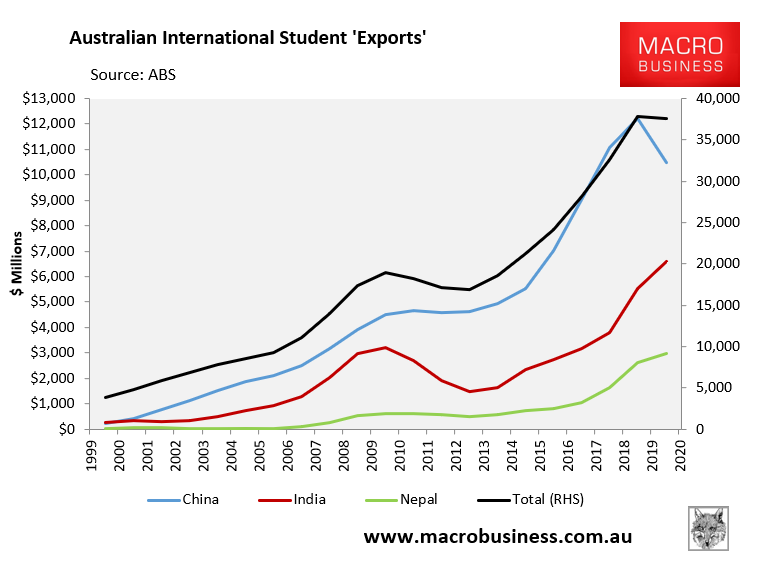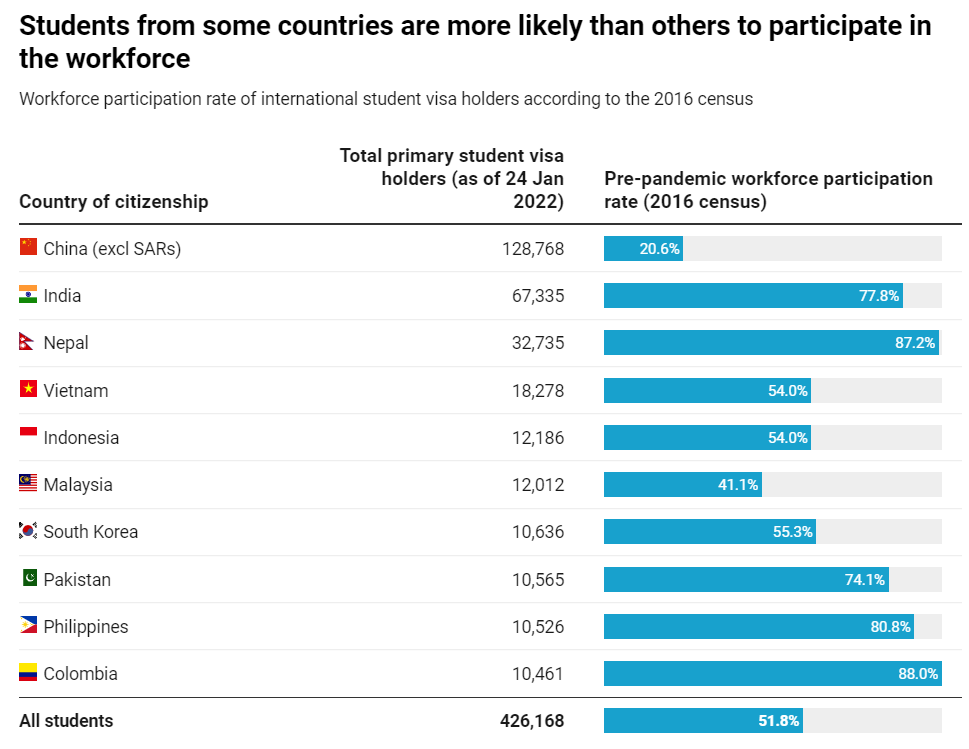For years I have argued that Australia’s international education exports (presented below) are wildly exaggerated for the simple reason that the Australian Bureau of Statistics (ABS) wrongly counts expenditure in Australia by international students with money earned by working in Australia.

This type of expenditure is by definition not an export since the money has originated in Australia, not come from abroad.
It is also abundantly clear that international exports are also likely to be much higher for Chinese students than those from South Asia, such as India and Nepal, as well as the Philippines and Colombia.
As shown in the below graphic, the overwhelming majority of students from these countries undertook paid employment in Australia to support themselves, whereas only around one-fifth of Chinese students did likewise:

Therefore, the notion of international education ‘exports’ only really applies to Chinese students, since they tend to fund themselves with Chinese money rather than employment income earned in Australia.
An article published today in The AFR supports this view, noting that 60% of Chinese students enrolled at an Australian institution are studying remotely from China, whereas students from South Asia and Columbia want face-to-face teaching in Australia, presumably because they are more interested in working and permanent residency:
Students’ eagerness to return to face-to-face, campus-based teaching is heavily influenced by country of origin. In February, 131,000 Chinese students held student visas, with 60 per cent outside Australia. However, almost all Indian, Nepalese, Colombian and Nepalese students were in Australia.
As explained by Associate Professor Salvatore Babones in his latest book, “Australia’s universities, can they reform”:
In reality, everyone (except perhaps the government and the universities) knew that many international students pay for their courses out of the proceeds of their work in-country, often working excessive hours under exploitative conditions, in violation of their visa terms. This situation is especially common among South Asian students, and is reflected in the steep fall-off in South Asian student numbers when teaching moved online. With prospective students unable to rely on employment income in Australia to support their studies, new commencements of Indian students at Australian higher education providers fell 65% between 2019 and 2021; for Nepali students, the decline was 37%; for Pakistanis, 45%; for Sri Lankans, 54%. These countries are simply too poor to send large cohorts of international students to Australian universities based on family resources alone. For many South Asian students, a student visa is a very expensive but thinly disguised work visa.
With regards to students from South Asia, the Philippines and Colombia, ‘international education’ is mostly a people-importing immigration industry rather than a genuine education export industry. Student visas are mostly a low-skilled work visa in disguise.
If work rights and permanent residency were scaled back, the numbers arriving from these nations would collapse.

